| All Artists: Johann Sebastian Bach, Christoph Spering, New Berlin Chamber Orchestra, Angela Kazimierczuk, Markus Schafer, Wilfried Jochens Title: Bach: Matthaüs-Passion Members Wishing: 1 Total Copies: 0 Label: Tete-a-Tete Release Date: 10/8/2002 Genre: Classical Styles: Opera & Classical Vocal, Chamber Music, Historical Periods, Baroque (c.1600-1750), Classical (c.1770-1830), Sacred & Religious Number of Discs: 2 SwapaCD Credits: 2 UPC: 709861200016 |
Search - Johann Sebastian Bach, Christoph Spering, New Berlin Chamber Orchestra :: Bach: Matthaüs-Passion
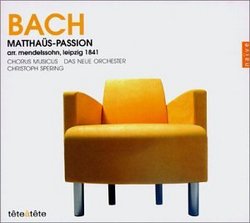 | Johann Sebastian Bach, Christoph Spering, New Berlin Chamber Orchestra Bach: Matthaüs-Passion Genre: Classical |
Larger Image |
CD DetailsSimilarly Requested CDs
|
Member CD ReviewsReviewed on 9/10/2009... Marvelous recording of this classic. This recording uses the version Mendelssohn prepared for a concert performance in Leipzig in 1841; an eloquent tribute from the composer to the genius of this predecessor.
CD ReviewsA Must-Have Recording R. Gerard | Pennsylvania USA | 01/16/2003 (5 out of 5 stars) "In Bach's life he was not famous as a composer. Rather, he was famous for his improvisitory skill at the organ. After his death in 1750, he was a forgotten man.Still, his successors (Mozart, Beethoven, Chopin, etc.) were the few to recognize his genius for almost a century.In either 1727 or 1729, Bach composed the St. Matthew Passion- arguably the most perfect music in Western culture, and after the death of the master, the St. Matthew Passion, too, was forgotted.Felix Mendelssohn, as a child, had recieved a copy of the St. Matthew Passion sheet music from an older relative. It's unique double chorus setting and Bach's heartfelt music to Picander's richly sybolic poetry captivated the young Mendelssohn, but it wasn't until 1829, the centennial of the composition, that the merely 20-year-old Felix Mendelssohn revived the work and the world again became awakened to the miracle of Bach's genius. This recording is a must have (highly recommended to newcomers to Bach's works) because it offers a new vision of a timelessly popular work.Mendelssohn's audience, of course, was different than Bach's. And so Mendelssohn had to make revisions to the work to make it more in tune to the trends of his time. For instance: the Evangelist is accompanied by full strings instead of just an organ continuo. The chorale "O Lamm Gottes Unschuldig" is sung by Sopranos, Altos, Tenors, and Basses, rather than just Sopranos. Many arias are shortened (for instance, instead of using ABA form [da capo form] in the aria "Buss und Reu" he uses the AB form.) Many arias are omitted (such as "Sehet Jesus hat die Hand.") The note values for the chorales are lengthened and the the last chorale sung immediately following Christ's death ("Wenn ich einmall soll Scheiden") is approached in a beautiful a capella. The chorus Mendelssohn used was much, MUCH larger than that used by Bach. Mendelssohn's choir reached well over a hundred, whereas Bach used only 12 singers total: 4 solo voices for each choir and 4 more for occasional lines. There are also many more changes to list.These are not bad aspects at all, and rather, it helps make the St. Matthew Passion more dramatic. Mendelssohn knew which were key dramatic elements in the text and shortened the music to emphasize them. The result is thoroughly exciting.Christoph Spering's conducting here is first rate. He demonstrates that he knows how to keep the drama flowing.The Orchestra helps add atmosphere to this Bach-Mendelssohn work while adding an authentic, historically informed rendition keeping in mind Baroque and Romantic practices. The soloists are all excellent. The Evangelist is simply amazing and, in my opinion, ranks second only to the likes of classic St. Matthew Passion Evangelists such as Anthony Rolfe-Johnson and Ian Bostridge.This recording does not come with a libretto and the liner notes span only a page, but they are available at the record label's website.Spering's present recording is of the 1841 version of the Mendelssohn-Bach St. Matthew Passion. This is the only recording of the Mendelssohn arrangement available on record.This is a must have recording to all who are interested in Bach. Mendelssohn's arrangement of the St. Matthew Passion is the single reason why we love and listen to the works of Bach to this day." A new 'old' approach to a familiar work Claude Greenmount | The Universe | 09/11/2005 (4 out of 5 stars) "I purchased this recording largely out of curiosity, not really knowing what to expect. It has become de rigeur for any recording of this work (or any Bach work for that matter) to adhere to what is understood by the conductor to be proper (Historically Informed) performance practice (probably the last major release of this work on modern instruments was that led by Raymond Leppard in the early 80s, which, incidentally, is very fine). This recording makes use of Felix Mendelssohn's edition which he created in 1829 for the revival of the work. There was no such thing as an historically informed performance practice ethos then; in fact, such an effort would have been, at best, mystifying to performers and audience alike, if not greeted with outright hostility. Mendelssohn adapted the score as he saw necessary, most evidently in the choice of divided violas and cellos to accompany the Evangelist and other soloists (thankfully he did not employ the piano to realize the figured bass). The one exception is the 'earthquake recit' where Mendelssohn used the full string section to back up the Evangelist. Jesus is accompanied as originally written, with full string sections playing (save for the moment he cries out "Eli, Eli, lama asabtani?"). Some re-writing of the Evangelist's part is also in evidence, mostly in avoidance of high notes (which, as we know now, were really sung about a 1/2 step lower than our modern pitch).
Some of Bach's instrumental choices, like viola da gamba and oboe d'amore, were already old-fashioned and becoming scarce in his time, and of course had competely vanished by the 19th c. The movements using gamba obbligatto are missing entirely and clarinets substitute for the more exotic varieties of oboe Bach calls for. Also missing are many of the graces that Bach wrote into the score, and there is virtually no improvised ornamentation. The missing graces are very noticeable to one familiar with the work in the movement 'So ist mein Jesus nun gefangen.' I have to admit however, that I really enjoyed the raw power that the mdern instruments and mixed choir bring to 'Sind Blitze, sind Donner in Wolken verschwunden?' which immediately follows. In general, the conductor has made good tempo choices, not succumbing to the recent trend of faster and faster performances of early music (a couple of HIP recordings of this work give an almost gigue-like character to the opening movement, "Kommt Ihr Töchter;" in the words of one critic, "Jesus jogging to Golgotha, pumping his cross the whole way.") . Some of the chorales wallow a bit much, and there are some surprising dynamic fluctuations. It is not clear to me however if those are conductor choices, or directions Mendelssohn added to his score. Mendelssohn's re-scoring of the 'earthquake recit' ("Und siehe da, der Vorhang in Tempel zeriß") with full strings sections rumbling along will likely bring a smile to the lips of the hearer familiar with the work in its original guise but there's no denying the inherent drama of the performance. Nowadays it is very easy to be dismissive of these early efforts at performance of pre-Classical (Haydn-Mozart-Beethoven) music, but I found myself very attracted to this effort. The changes Mendelssohn made mainly reflected the realities he faced: no harpsichord, and probably no organ in the space used for the 1829 performance, certainly no gamba or oboe d'amore players (or viole da gamba or oboi da'more for that matter), and no boy sopranos. But he made it possible for a brand new audience to hear this music for the first time in 3 generations, and he started an interest in the music of Bach that grew to encompass the music of Bach's contemporaries and predecessors, an interest that became an enthusiasm that continues today, 175 years later. The edition and the performance on this recording reflect genuine admiration and affection for the material. It's a good addition to the collection of the cognoscente, and for those just learning Bach, it might be more to your liking-- at least initially-- than some of the more hard-core HIP versions by Leonhardt et al." |



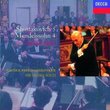
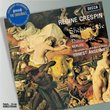
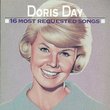
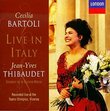
![Bizet: Carmen / Jessye Norman, Freni, Shicoff, Estes, Le Roux; Ozawa [Highlights]](https://nationalbookswap.com/cd//m/87/0887/6020887.jpg)